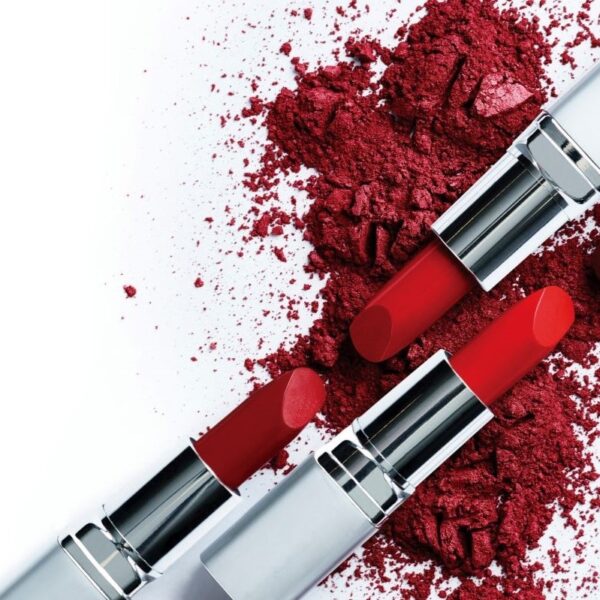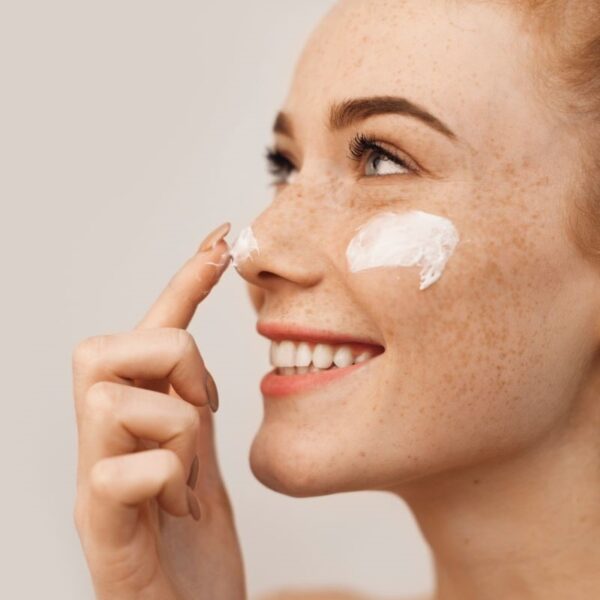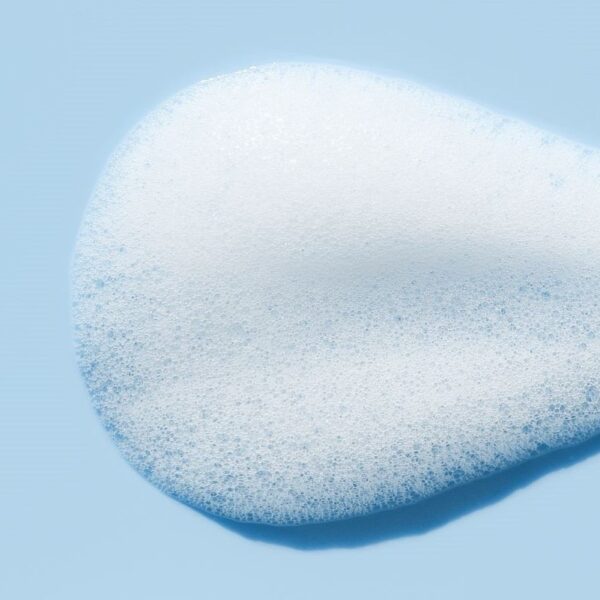Tocopherols and tocotrienols are the two molecules that comprise the vitamin E family. The family has eight molecules, each consisting of a chromanol ring with an aliphatic side chain. Based on the side chain is saturated or unsaturated, each molecule can be identified as a-tocopherol or tocotrienol, respectively. This article will explore how alpha-tocopherol is used to formulate cosmetics and personal care products.
What is Alpha Tocopherol?
Alpha-tocopherol is the most potent naturally-occurring scavenger of reactive oxygen and reactive nitrogen species (ROS and RNS), making it a highly effective antioxidant. Vitamin E, including alpha-tocopherol, is obtained mainly from plant sources. Sunflower seeds, olive oil, and almonds contain high amounts of α-tocopherol. Most other oils and seed oils are rich in γ-tocopherol.

Naturally occurring tocopherols are obtained by the extraction or molecular distillation of steam distillates of vegetable oils — for example, alpha-tocopherol occurs in concentrations of 0.1 — 0.3% in corn, rapeseed, soybean, sunflower, and wheat germ oils. Beta and gamma-tocopherol can also be found in natural sources. Racemic synthetic tocopherols may be prepared by condensing the appropriate methylated hydroquinone with racemic isophytol.
Use of Alpha Tocopherol in Cosmetics and Personal Care
Alpha-tocopherol serves a variety of functions in cosmetics and personal care products. It’s commonly used for the following:
Antioxidant: Fats, oils, and butter are sensitive to oxidative processes, which may trigger deterioration. As a result, the product may change color, develop an odor, or experience stability problems. Antioxidants prevent the oxidation of sensitive components and, thus, rancidity.
Fights Free Radicals: Antioxidants, as their name implies, protect against oxidative reactions. This property provides stability to cosmetic formulations and can slow skin aging caused by various oxidative mechanisms. DL-α-Tocopherol (Alpha-tocopherol) is an antioxidant that protects cell membrane lipids from oxidative damage. Tocopherol is a lipid-soluble chain-breaking antioxidant of membranes and an essential cellular protectant against oxidative damage. It exerts antioxidant effects by trapping peroxyl radicals.
UV Absorber: Traditionally, antioxidants are included in shampoo formulations to avoid oxidation of unsaturated components such as vegetable oils and oleic acid derivatives. Typical antioxidants used are BHT, BHA, and tocopherol. Most shampoo manufacturers market them as a protectant for the fading of hair color from light exposure. For a UV absorber to work in this way, it has to be water soluble and substantive to the hair.
Moisturizing Agent: Moisturizers are designed to improve skin quality, maintain or restore moisture content, and keep skin smooth and pliable. For this reason, tocopherols aid in alleviating the symptoms of dry skin.
Applications in Cosmetics & Personal Care
| Function | Applications |
| Antioxidant | Skincare Products, Hair Care Products |
| Skin Active Antioxidant | Anti-Aging Products (Such as Serums and Creams) |
| Moisturizing Products | Skin Creams, Lotions, Serums, Sunscreens |
Properties of Alpha Tocopherol
| Appearance at 25 °C | Yellow-Brown Viscous liquid |
| Molecular Weight | 430.71 g/mol |
| Density at 25°C (g/cm3) | 0.950 g/cm3 |
| Specific Gravity at 25°C | 0.95 g/ml |
| Refractive Index at 20°C | n20/D 1.506 |
| Solubility | Insoluble in water and soluble in alcohol, ether, acetone, oils |
| Boiling Point | 200 to 220 °C |
| Melting Point | 2.5 to 3.5 °C |
| Odor | Characteristic, bitter almond |
| Stability | Light sensitive; readily oxidized upon exposure to atmospheric conditions or light |
| Shelf Life | 12-18 months |
| Storage Conditions | Tocopherols should be stored under an inert gas in an airtight container in a cool, dry place and protected from light. |
Typical Formulations
Here’s an example of a skincare product formulation using alpha-tocopherol.
Moisture Surge Watery Essence
Essences, serums, and ampoules quickly deliver active ingredients deep into the skin. Moisture Surge Watery Essence is a light emulsion that provides moisture and vitamin C. This watery formula reduces dullness and helps to achieve deeply hydrated and radiant skin. Its very light and cooling texture is absorbed directly, providing instant hydration. It delivers protective hyaluronic acid and stimulates the gradual replenishment of collagen. It leaves skin supple and satiny with no signs of shine.
In this example, alpha-tocopherol is used as an antioxidant to protect the formula’s heavy oil phase, helping the product’s overall stabilization.
| PHASE | INCI Name | TRADE Name | % Wt. |
| A | Aqua | Water deionized | Up to 100 |
| Glycerin | Glycerin,99% | 3.00 | |
| Propanediol | Zemea | 3.00 | |
| Phenoxyethanol, Ethylhexylglycerin | Lexgard PE 9010 | 1,00 | |
| Sodium Stearoyl Lactylate | Akoline SL™ | 0.5 | |
| Potassium Hydrolyzed Polygamma-Glutamate | AquaMax LM | 0.1 | |
| B | Polyglyceryl-3 Stearate | Akoline PG7™ | 2.00 |
| Lecithin | Emulmetik 300 | 0.20 | |
| Shea Butter Ethyl Esters | Lipex SheaLight™ | 4.00 | |
| Butyrospermum Parkii Butter Extract | Lipex Shea Tris™ | 0.50 | |
| Phytosteryl Canola Glycerides | Lipex Cellect™ | 1.00 | |
| Diheptyl Succinate, Capryloyl Glycerin/Sebacic Acid Copolymer | LexFeel N 5 | 2.00 | |
| Caprylic/Capric Glycerides | Akoline MCM™ | 0.50 | |
| Alpha-Tocopherol | Copherol F1300 C | 0.50 | |
| C | Sodium Hyaluronate | Hyaluronic Acid Na-salt 1,8 – 2,2 MDa | 4.00 |
| Acrylates/C10-30 Alkyl Acrylate Crosspolymer | Pemulen TR 1 | 0.40 | |
| Xanthan Gum | Keltrol CG-SFT | 0.25 | |
| D | Ethyl Ascorbic Acid | Ethyl Ascorbic Acid | 0.50 |
| Aqua | Water deionized | 3.00 | |
| E | Sodium Hydroxide | NaOH 18% | 0.40 |
| Aqua | Water deionized | 3.00 | |
| F | Alcohol Denat. | Alcohol Denat. | 5.00 |
| G | Panthenol | Panthenol 75% | 1.00 |
| Aqua, Glycerin, Glycine Soja Seed Extract | Phytosan K | 2.00 | |
| H | Parfum | Age Renew AF SOL 28115/10 | 0.60 |
| Total | 100% | ||
Formulation Procedure
- Blend phase A (Water Phase) and begin heating to 80°C.
- Add phase C ingredients one at a time to hot phase A and stir vigorously.
- Heat phase B (Oil Phase) to 80°C and mix until melted and homogenous.
- Add phase C to the merged phase (A+B) while mixing.
- Homogenize.
- After homogenization, add phase E (dissolved NaOH) while stirring.
- Cool to 30°C while stirring.
- Prepare phase D (dissolve Ethyl Ascorbic Acid) and carefully add to the mixture.
- Add phase G ingredients one at a time while stirring.
- Slowly add phase F while stirring.
- Add phase H and stir well.
Alpha Tocopherol Formulation Considerations
- Mixed tocopherol, such as a combination of d-alpha tocopherol, and beta-tocopherol, could protect the formula against oxidation when used in concentrations as small as 0.1%.
- While using Alpha-Tocopherol to protect the formulation against oxidation and product instability; the maximum concentration to be considered should be 2%. Below, this concentration is sufficient enough to protect from oxidation. As the concentration above, this can cause consumer irritation
- The ideal recommended concentration of Alpha Tocopherol for use in lotions and standard emulsions should be between 0.1-1%.
- When the formulation process consists of many hot processes, greater concentration should be considered because antioxidants should be added below 40°C so that the oxidative process is not started.
- Antioxidants protect the formula when exposed to other extreme conditions or over time. So if the antioxidant-Alpha-Tocopherol is already added into the hot phase, it will use some of its oxidative protective benefits while packaging itself. Hence to avoid this, generally higher concentration should be considered so that antioxidant property is present to provide long-term shelf life protection.
- If the formulation consists of more oxidation-prone ingredients such as plant oils, essential oils mixed with alpha tocopherols should be considered an antioxidant for the system.
- Enough stability studies should be done at different temperatures and storage conditions to decide on the concentration of Alpha-Tocopherol, finally stabilizing the product.
Alpha Tocopherol Safety & Regulatory Considerations
FDA Information: GRAS-listed and included in the FDA Inactive Ingredients Database (IV injections, powder, lyophilized powder for liposomal suspension; oral capsules, tablets, and topical preparations).
EU Information: Accepted in Europe as a cosmetic additive. All tocopherols are listed in the European Union inventory of cosmetic ingredients.
Canadian Information: Included in the Canadian List of Acceptable Non-medicinal Ingredients. Included in nonparenteral medicines licensed in the UK.
Cosmetic Ingredient Review (CIR): Accepted to be used in cosmetics and personal care products.
Identification Numbers
| CAS Number | 59-02-9 |
| EC Number | 200-412-2 |
| E Number | E307a |
| ELINCS Name | Tocopherol; Vitamin E |
| ELINCS Number | 233-466-0 / 218-197-9 / 200-412-2 / 205-708-5 / 204-299-0 / 200-201-5 |
The recommended dosage in different personal care products as given by CIR is as follows:
| Ingredient | % Composition |
| Baby Product Formulations (such as baby Lotions, Oils, and Creams) | 0.1-0.5% |
| Lipsticks | 0.5-3% |
| Pump Hair Spray Formulations | Up to 1% |
| Aerosol Deodorants | Up to 0.1% |
Fun Facts About Alpha Tocopherol
- Alpha-tocopherol is an essential nutrient and the only form of vitamin E that the human body can use.
- Dietary supplementation with α-tocopherol was found to slow cognitive decline or loss of functional abilities in cognitively impaired subjects in some, but not all, clinical trials.
- Vitamin E deficiency can cause nerve and muscle damage, resulting in loss of feeling in the arms and legs, loss of body movement control, muscle weakness, and vision problems.





